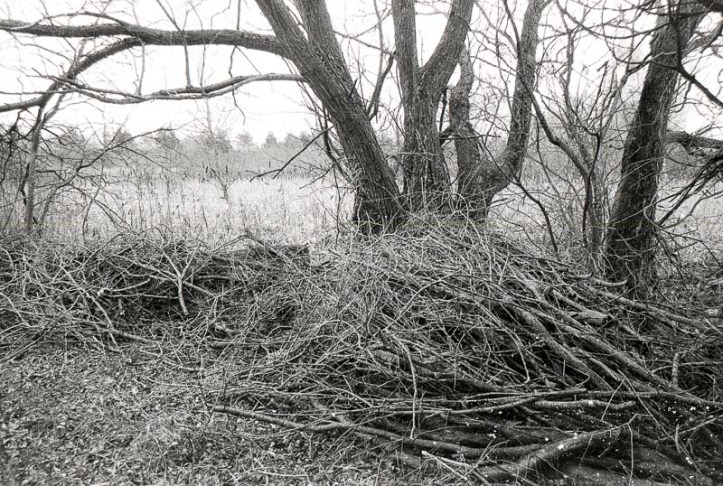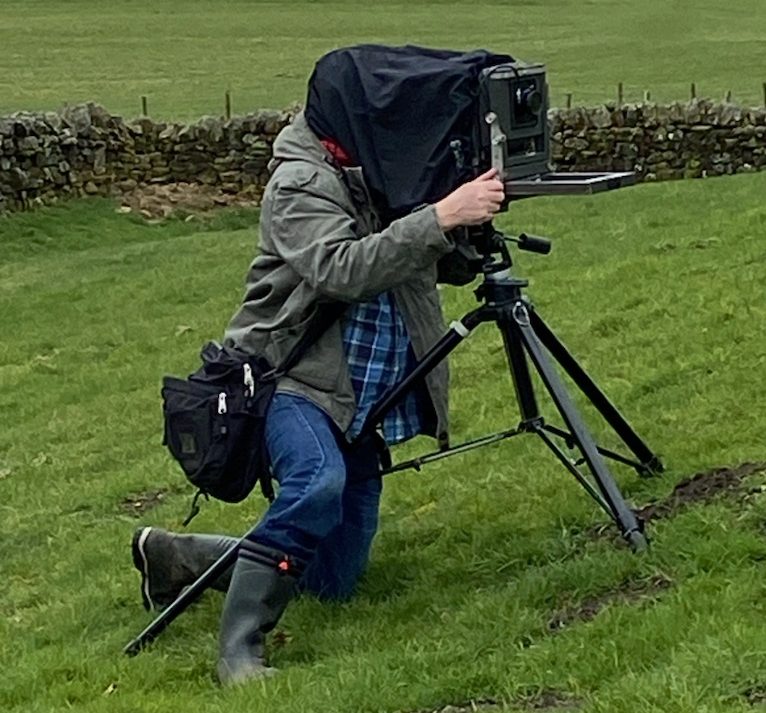I’m not normally one for trying out every available film – I generally prefer to stick with a smaller range from the major suppliers, i.e. Kodak, Ilford, and Fuji.
So for black and white film in the slow-medium ISO range I’m happy with any of Kodak TMax 100, Ilford FP4+, or Fuji Acros.
I’ve not yet settled on a preferred list of faster films, i.e. ISO 400 and above; probably because I’m not personally a fan of grain. For the landscape and still life images that form 90% of my photography, I’m looking for fine details where possible.
In medium format I’m fairly happy with Kodak Tri-X, which can reasonably be pushed to ISO800 or 1600, but I’ve found it too grainy in 35mm for my liking. Yes, I know that Don McCullin took bucketloads of great images on 35mm Tri-X, but the visual requirements for conflict photography are not the same as for landscapes.
So it was, that when I had to buy some fixer in an emergency by mail order, I decided I should add a roll of Fomapan Retro 320 to my basket, in order to get more value out of the minimum shipping charge.
Since the film is available in 35mm and large format, but not 120, and I don’t have a large format camera, I loaded the resulting 35mm roll into my Canon FTb, newly equipped with a new-to-me Tamron Adaptall 28-70mm zoom lens which I had bought for just £19.99 including postage. Of course, trying out a new film type at the same time as a new lens really is not a good idea, since any defects could be due to the lens and/or the film.
The first four images are from Guyzance, a hamlet on the River Coquet in Northumberland.

This weir was the site of an accident in 1945 when ten young soldiers died on a training exercise, and there have been other more recent tragedies.

The only developer I had in stock, for which developing times are listed on the Massive Development Chart, was Rodinal, so I dug out the Rodinal and was surprised to find the bottle half full even though it had only been used once; I think the cap doesn’t fit well and some of the liquid had evaporated.
So Rodinal at 1:50 it was. I have to say that the results were the most grainy I have ever experienced from any film, except for the much faster Ilford Delta 3200. Of course, many photographers will say that I used the wrong developer, as Rodinal is not known for fine grain. Foma recommends “Foma Retro Special Developer” for this film, but I don’t find it practical to keep a different developer in stock for a single film type.

A mill building. To be fair to Retropan, this image does show some promise in the ability to show details across a wide tonal range. Not only does the rear wall hold a lot of detail, but so does the small hole in the rear wall.

Next two are from Shibdon Pond near Blaydon, in dull weather.


If Retropan 320 was available in 120 roll format, I might be willing to try it for longer, and with a more suitable developer – but I shoot so little 35mm these days that it’s not worth the effort. The obvious way to get better quality from 35mm is to switch to a bigger format.
So for the time being my ISO400-ish needs will continue to be met by Kodak Tri-X in medium format. For 35mm, Ilford XP2 Super comes the closest to my needs, but I may just avoid ISO400 in 35mm. For the last few months, I have been shooting Kodak T-Max 100 at ISO 200; this can be developed in TMax Developer for the same time as ISO100 and the results have been good from my Fujifilm GA645Zi. In the next few days I will be developing a roll of 35mm T-Max at 200 so it will be interesting to see how that turns out. The difference between ISO200 and ISO320 is only two-thirds of a stop, after all.

I really like the tones in these images. I was developing Fomapan 200 in Rodinal but was never pleased with the results, switched to D76 what an improvement for me.
LikeLiked by 1 person
Being a fan of the grain, I think you’ve hit on something good here! But to each their own. Thanks for sharing. I might just give Foma Retropan a try.
LikeLike
I bought 100ft of Retropan 320 and I can’t wait until I’ve got through it. I like grain but the grains are too big on this. The total lack of contrast doesn’t work for me either. These pics are far better than anything I’ve managed. I’ve tried under-exposing and pushing the development. I’ve tried over-exposing and pulling the development.
Nothing looks good. No more Retropan for me. Fomapan 100 is nice though.
LikeLike
Ian, thanks for your comment. If it was me, I’d chuck out the 100ft roll – you can’t recover the wasted money but by stopping using the film you can avoid wasting your time. I hate it when I return from a promising day of photography to find that the images aren’t useable because of film quality.
LikeLike
I’m new to developing so it’s useful for experimenting with, but yeah, I won’t go out with Retropan as my only option. It’s strictly backup-camera snapshots.
LikeLike
Great review, and very informative comments too. I’ve been using Fomapan 200 pushed to 800, with Rodinal stand development (1.5ml per litre for 2 hours, with a wee shoogle half way through). Despite everything said about pushing and about Rodinal, I’m getting very little grain compared to other films, and exactly the higher level of contrast that I’m looking for. Worth a try if you’re wanting a faster film with less grain than usual. See my pic: https://www.lomography.com/homes/poglad/photos/21637973
LikeLike
1.5ml per 100ml I meant!!! LOL
LikeLike
The Retropan 320 is best for subjects with a long tonal range. It makes box speed in the dedicated developer, which is all I have used so far.
It is a good film to keep in a spare body. Not for general purpose usage.
I would like to see what the film is like in a normal developer before I condemn it and so I have bought another cassette of Retropan and one of Fomapan 400.
I will use a more general purpose developer and whatever I shoot with Retropan I will duplicate with the Fomapan 400.
LikeLike
Kevin,
Have you tried Kodak T-Max 400 in 35mm? I find the results excellent in XTOL and I’m sure ID-11 / D-76 would work very well. Not sure Rodinal is really the best option for reasonable grain in a 400 speed 35mm format.
Tom Kershaw
LikeLike
Thanks Tom, I have shot a few rolls of TMax 400 and may try it again in future.
LikeLike
Would definitely second Tmax 400 in 35mm. I would say its finer grained than FP4, and without doubt the finest grained 400 speed film I’ve come across.
LikeLike
Agree that Tmax 400 is really an incredible film for the speed. Kodak have invested some serious effort and technology in this product. I’m not convinced Delta 400 is comparable. Having said that, I’m planning to do some more experimentation with FP4+ and HP5+, although for medium format.
LikeLike
Hi, just I saw your photos and there is a possibility to reduce grain, using Retro at 640 ASA and Retro developer 9 minutes at 20 Celsius. If you send me mail I can give you some pictures.
LikeLike
Here in the states we can get this film in 120. I’ve tried it a couple of times and I didn’t like too much either. But I think I like the way yours turned out. I used D76 stock. I am a D76er and I keep it simple, usually 1:1 and 1:3 dilutions depending on my mood.
LikeLike
Your results were superior to mine. Shot in 120 size in a Mamiya RB67 and a Mamiya Six Automat.
Besides grain, mine were tonally flat, really flat. Next roll the development (Rodinal) was increased, worse grain by far and still flat. Also tried HC-110 B and that was no better. In over 50 years in a darkroom, this is the least useful film personally shot & developed. Bleah!
LikeLike
My experience agrees with Tom ‘s (above). Tried it in D-76, HC-110 and divided D-23 and didn’t care for any of the results. Grainy and poor tonal separation.
Your results are superior to mine.
Will not purchase it again.
LikeLike